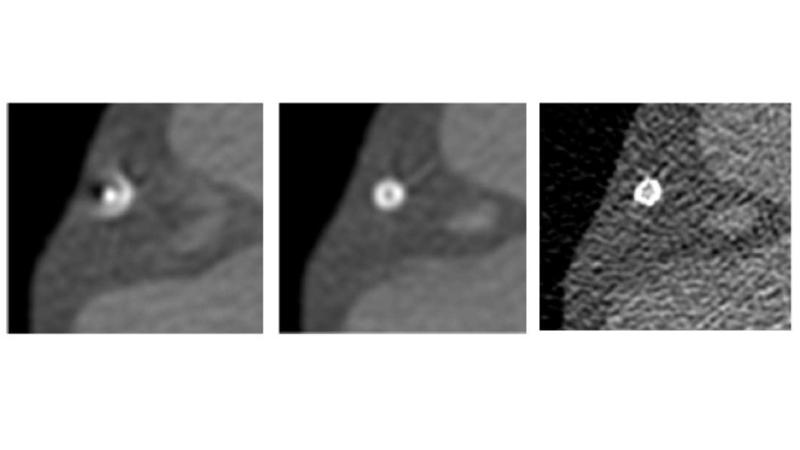$3.7 million NIH grant supports AI developments to improve accuracy of diagnosis and reduce need for patients to undergo more costly and invasive procedures
October 13, 2020

Heart disease is the leading cause of death worldwide for men and women. The most common type of heart disease, coronary artery disease, is caused when plaque builds up along the walls of arteries that carry blood to the heart. It is often diagnosed through a cardiac computed tomography (CT) scan, which shows doctors if arteries are narrowing.
With the support of a $3.7 million grant from the National Institutes of Health’s (NIH) National Heart, Lung, and Blood Institute, an academic-industrial collaboration between General Electric Research, Rensselaer Polytechnic Institute, Cleerly, and Weill Cornell Medicine will develop cutting-edge techniques for removing the appearance of blurry images — known as blooming artifacts — from cardiac CT scans to improve the accuracy of cardiac diagnosis and prevent patients from having to undergo costly and invasive procedures.
“These cardiac CT blooming artifacts are one of the major challenges in the CT field,” said Ge Wang, an endowed chair professor of biomedical engineering, the director of the Biomedical Imaging Center, and a member of the Center for Biotechnology and Interdisciplinary Studies (CBIS) at Rensselaer. “We have a great opportunity to redefine state-of-the-art CT technology through this NIH-funded project.”
The goal of this research is to use innovations in artificial intelligence to remove blooming artifacts from images without having to redesign current CT hardware. To that end, the Rensselaer and GE Research teams will design deep learning algorithms capable of optimizing image quality and diagnostic performance.
“This project is a wonderful example of how a multidisciplinary meeting of the minds will turn CT imaging into an even more powerful diagnostic tool for cardiac care,” said Bruno De Man, GE Research’s technology manager for radiation imaging and the contact principal investigator for this program. “It combines CT experts at GE Research, RPI’s expertise in deep learning algorithms, and clinical thought leaders at Cleerly and Weill Cornell Medical School.”
De Man and Wang and their teams have been collaborating on medical imaging for over a decade and are among the best in the world in the area of deep learning and tomographic reconstruction. For this project, they are partnering with an outstanding clinical research team, led by Dr. James Min from Cleerly and Dr. Fay Lin from Weill Cornell Medicine. The clinical team will collect data from more than 100 patients with coronary artery disease using both CT and intravascular ultrasound, which will be used to demonstrate the effectiveness of the new imaging methods.
“Cardiovascular disease is one of the leading killers in this country and globally,” Wang said. “We are working on these challenges to help many, many patients, including ourselves, in the future.”
This academic-industrial collaboration is an example of interdisciplinary and collaborative research across industry, academia, and clinical institutions.
GE Research has a history of X-ray and CT innovations, including the development of GE’s first CT scanner, the world’s first digital breast tomosynthesis (also known as 3D mammography), and the invention of numerous CT reconstruction techniques that are now adopted in every modern CT scanner.
Drs. Min and Lin are known for their groundbreaking work in cardiac imaging. This project will provide them with a new tool to achieve higher levels of accuracy in diagnosing cardiac disease, further improve patient outcomes, and reduce overall costs to the health care system.
Throughout his distinguished career, Wang published the first helical/spiral cone-beam/multi-slice CT algorithm, followed by more than a hundred papers in this area. This type of CT is now used in hospitals worldwide.
This project also leans into Rensselaer expertise in data science and deep learning research, and will be facilitated by the Institute supercomputer, AiMOS — one of the most powerful university-based supercomputers in the world.